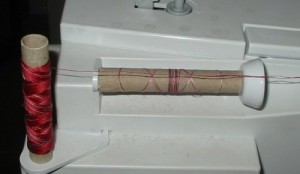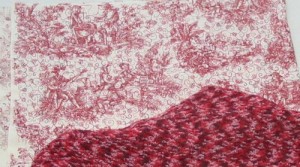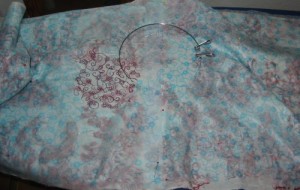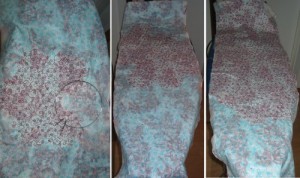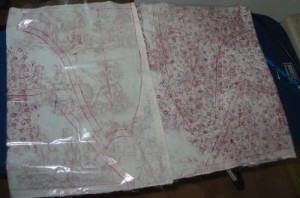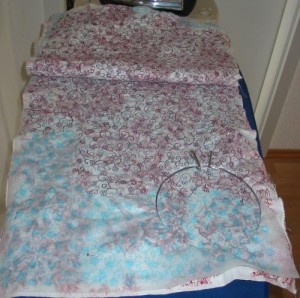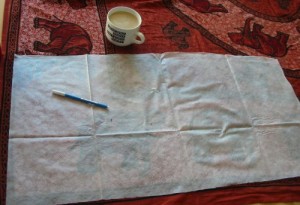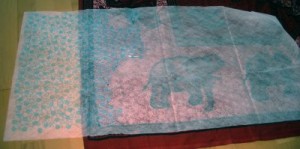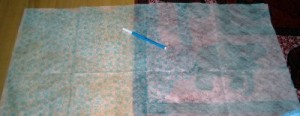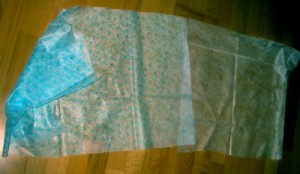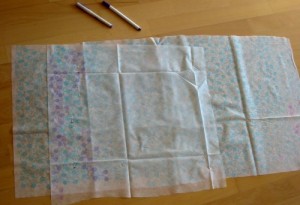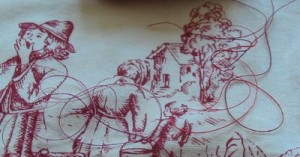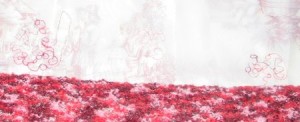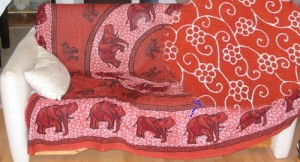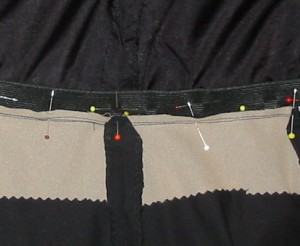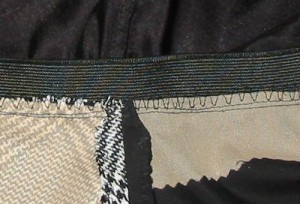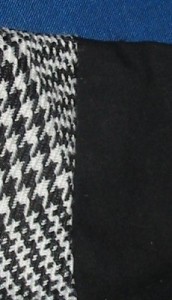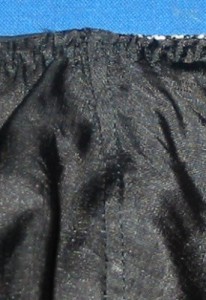“So, you live in Paris intermittently?”
Very good question, Isabelle… do I?
Maybe… I’m gonna tell the whole story, if somebody is interested. If not… stop reading and wait for the next post. :o)
The first time I came to Paris was in 1998 on our honeymoon. (After five days of cycling in Burgundy and then, escaping the rain, another week in the Limousin.) It wasn’t more than some hours to see Notre Dame and the Seine, because the main purpose of our visit was finding an appartment around Orsay (a bit south of Paris) and preparing our move there.
My husband then moved there in September (as a PostDoc), I followed end of November, because I had to “hand over” my clients to another therapist. We started sight seeing in Paris on Sundays.
One day in December I went to Paris all alone for the first time. I took the RER B and got out at St. Michel-Notre Dame. The moment I stepped out in the daylight the yellow winter sun was shining, I was surrounded by a crowd of busy people… and felt just as if I’d belong there. As if I was at home.
So my husband and I do not only share the love for each other, but also for Paris.
When we had to leave in 2000 to start working in the “real world” (for my husband after years in the academic world) and “working again” (for me after two years of housewife with lots of time to explore Paris) we settled in the western part of Germany. Close enough to Paris to come back as often as possible. (The Thalys train makes it in less than four hours.)
And that’s what we are doing since then. And spending a lot of money in chep hotels. (Our choice has always been “more nights and less comfort” for the same money. 😉 )
Until my husbands grandma died and left him a small house in Bavaria. Which we sold to buy an even smaller studio in Paris last year (rest of the apparment belongs to the bank… Paris is really, really expensive). (In the Marais, just some steps from BHV and Hotel de Ville.)
Since then we feel at least at home there. Even if we sometimes rent it, its our place. We also do a lot of shopping in Paris, because I still know shopping facilities in Paris better than here in my German town. And some things are just more to my taste in France than in Germany. (Shoes, for example. And of course cheese. :-)) Still I’m not sure, whether we can be considered as “living” in Paris…? We spend a lot of time there (last year about two months in total for me, a little less for my husband – I an not empoyed so I can load my work on my laptop and off I am…), on the other side… we don’t work there. So we have, of course, not a real “normal” Paris life. On the other side… we have a French bank-account and we have the most important thing of all: “Facture EDF”, the electricity bill… (any foreigner ever been in the cycle of needing an appartment and hence having an electricity bill to get a bank account and needing a bank account to get french cheque-book to get an apprtment knows what I’m talking about… 😉 )
Anyhow… I love it. 🙂
Ob ich zeitweise in Paris lebe, wollte Isabelle wissen.
Gute Frage… tue ich das?
Vielleicht ein guter Anlaß, mal meine ganze Paris-Geschichte zu erzählen. Für die, die es wissen wollen. Der Rest bricht einfach hier ab und wartet aufs nächste Post. 😉
Das erste Mal kam ich 1998 nach Paris, auf unserer Hochzeitsreise. Damals reichte es allerdings nur zu einem Abend Kurzbesichtigung von Notre Dame und einer Pizza im Quartier Latin. Denn der Hauptgrund für den Teil der Reise war Wohnungssuche. Mein Herzblatt hatte eine Stelle als Postdoc in Orsay, etwas südlich von Paris. Die trat er im September auch an und ich kam Ende November nach, nachdem ich meine Klienten an meine Nachfolgerin übergeben hatte.
Im Dezember fingen wir dann an den Wochenenden an, Paris zu besichtigen.
An einem Dezembertag fuhr ich das erste Mal alleine ohne meinen Mann nach Paris. Ich stieg an der RER-Station St.Michel-Notre Dame aus und als ich in das gelbe Licht einer tiefstehenden Wintersonne hinaustrat, umgeben von geschäftigen Menschen auf dem Bürgersteig stand, hatte ich plötzlich das Gefühl, angekommen zu sein. Hier hin zu gehören.
Und so verbindet mein Herzblatt und mich nicht nur die Liebe zueinander, sondern auch die Liebe zu Paris.
2000 kehrten wir nach Deutschland zurück, ins “richtige” Arbeitsleben zurück, allerdings so westlich und nahe an Paris wie möglich. (Dank Thalys weniger als vier Stunden.) Und wir kamen wieder und immer wieder, gaben viel Geld für billige Hotels aus. (Letztlich wenn wir die Wahl hatten… dann war es immer das billigere Zimmer und dafür eine Nacht mehr. Oder zwei… *g*)
Bis die Großmutter meines Mannes starb. Oma ihr klein Häuschen wurde verkauft und dafür gab es ein noch kleineres Zimmer in Paris. (Den Rest gab die Bank… Immoblienpreise in Paris sind richtig, richtig teuer… Daß die Wohnung im Marais liegt, nicht weit vom Hotel de Ville entfernt, macht die Sache nicht besser.)
Seither fühlen wir uns dort zu Hause. Auch wenn wir das Appartment auch vermieten, es ist unsere Wohnung. Ich kenne auch nach wie vor die Einkaufsmöglichkeiten in Paris besser als hier in Deutschland, so machen wir eine Menge Einkäufe dort. Trotzdem.. ich binmir nicht sicher, ob das als “in Paris leben” zählt. Wir verbringen viel Zeit dort. Auf der anderen Seite ist es für uns immer Freizeit. wir arbeiten nicht dort, diesen Teil des Pariser Alltagslebens teilen wir nicht… aber wir haben ein französisches Bankkonto und, das wichtigste von allem, eine Stromrechnung. (Jeder Ausländer in Frankreich, der schon einmal den Teufelskreis aus ich brauche eine Wohnung, um an eine Stromrechnung und damit auch an ein Bankkonto zu kommen und ich brauche ein Bankkonto um französische Schecks zu haben und damit die Kaution für eine Wohnung bezahlen zu können kennen gelernt hat, weiß wovon ich rede… :o) )
Doch wie auch immer… ich liebe es!

